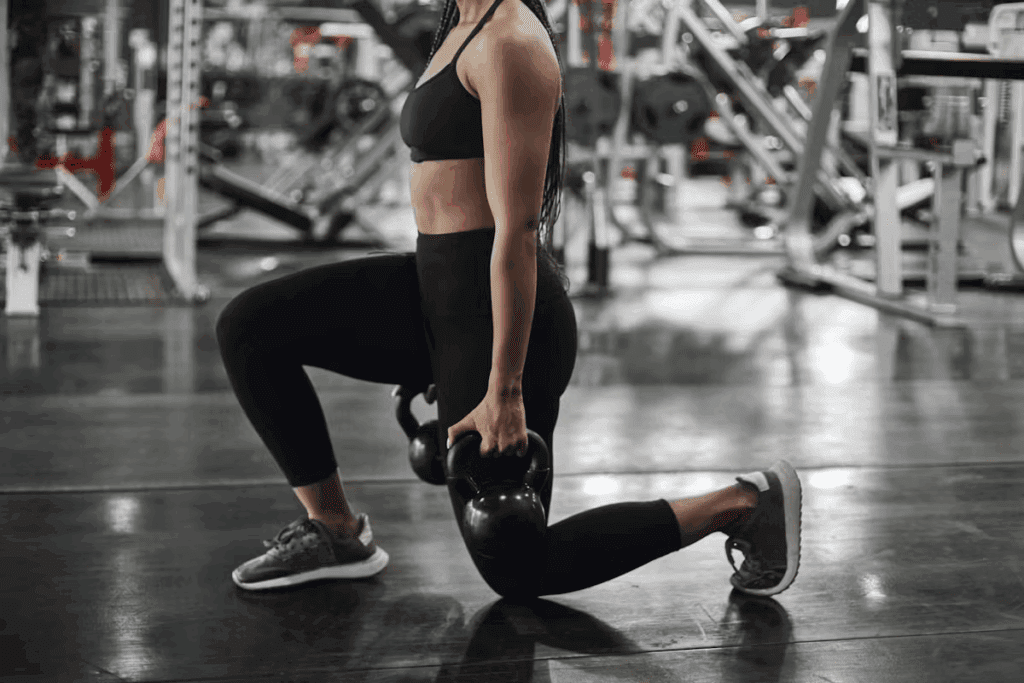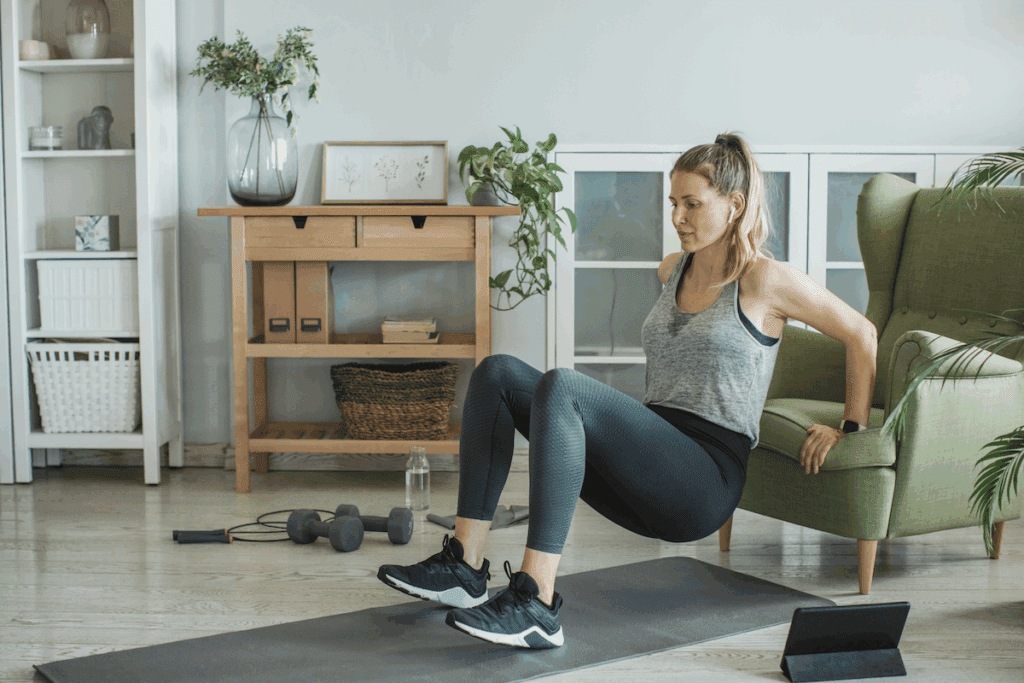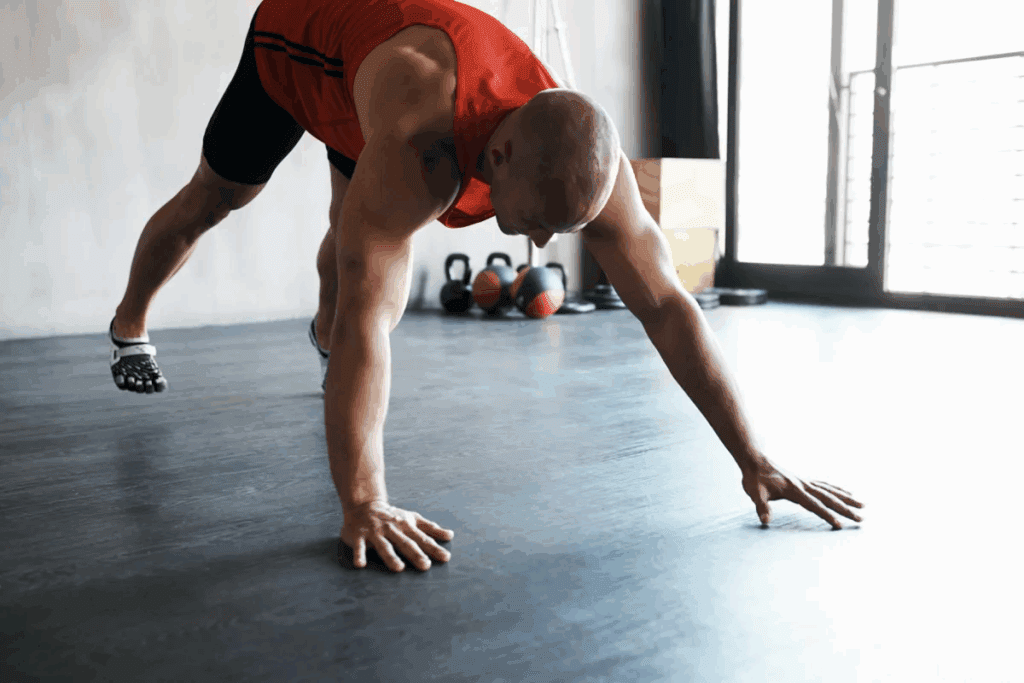
Improving heart health and boosting stamina is easy without expensive gym gear. You can do great cardio type exercises right at home. They are simple yet very effective. Discover best cardiovascular exercise at home with no equipment needed for full-body fitness.
Doing cardio regularly helps burn calories and boosts fitness. It also lowers the risk of heart disease. At Liv Hospital, we focus on safe and effective home fitness cardio routines for everyone.
Adding these exercises to your daily routine can make a big difference. You’ll strengthen your heart and improve blood flow. Plus, you get to work out from the comfort of your own home. Let’s dive into the top 15 cardio exercises that need no equipment. It’s a great way to start your fitness journey.

Doing cardio at home boosts heart health. It increases your body’s ability to use oxygen and lowers heart disease risks. Plus, you can work out in your own space without needing any special gear.
Cardio training is packed with health perks. It makes your heart stronger and improves blood flow. It also boosts lung function, helping your body get more oxygen.
Key Benefits of Cardio Exercises:
Cardio exercises are great for burning calories and losing weight. Adding cardio to your routine helps you burn more calories. The workout’s intensity and length affect how many calories you burn.
| Exercise | Calories Burned per Hour | Intensity Level |
| Jumping Jacks | 700-1000 | High |
| Burpees | 800-1200 | Very High |
| Marching in Place | 400-600 | Moderate |
Cardio exercises are good for your mind as well as your body. They make your brain release endorphins, which are like natural painkillers and mood boosters.
Regular cardio workouts can help reduce stress and anxiety by releasing tension and improving mood. This makes cardio exercises a key part of a healthy lifestyle.


Studies show that home cardio exercises without equipment are just as good as gym workouts. They improve your heart and lung health. We look at the science behind home cardio, how to measure its intensity, and matching it to your fitness level.
Research proves that home cardio exercises boost heart health. The U.S. Department of Health and Human Services says adults need 150 minutes of moderate aerobic exercise weekly. High-intensity interval training (HIIT) burns more calories in less time. Burpees, jumping jacks, and mountain climbers are great HIIT options for home.
A study found that HIIT workouts improve heart fitness and insulin sensitivity. Another study showed that in place cardio exercises like marching and step taps can be very effective if done right.
It’s key to measure your cardio workout intensity. Use heart rate zones to do this. Zones range from low (50-60% of max heart rate) to high (80-90% of max heart rate). Working in the right zone helps you reach your fitness goals.
It’s important to match your cardio exercises to your fitness level. Beginners can start with low-intensity exercises like marching in place or modified jumping jacks. As you get fitter, you can do more intense exercises like burpees or mountain climbers.
“The key to a successful cardio routine is consistency and progressive overload. As you get fitter, challenge yourself with more intense or longer workouts.”
Understanding the science behind cardio and tailoring your workouts can greatly improve your health and fitness.
Starting a new exercise routine can feel scary. That’s why we’re focusing on easy cardio exercises perfect for beginners or those who prefer low-impact workouts. These exercises need no equipment and can be adjusted to fit your fitness level.
Marching in place is a simple yet effective cardio exercise that can be done anywhere. Stand with your feet hip-width apart and your arms at your sides. Lift your knees up towards your chest, mimicking the motion of marching. You can pump your arms to increase the intensity. This exercise is excellent for improving cardiovascular health and can be modified by changing the speed or height of your knee lift.
Step taps are another beginner-friendly exercise that targets your legs and cardiovascular system. You’ll need a sturdy chair or step. Stand in front of the chair with your feet together. Lift one foot onto the chair and then step back down to the starting position, alternating legs. This exercise helps improve balance, coordination, and cardiovascular endurance.
Modified jumping jacks are a variation of the traditional jumping jack that reduces the impact on your joints. Stand with your feet together and your arms at your sides. Step out to one side while raising your arms above your head, then return to the starting position. Alternate sides with each repetition. This modification allows you to enjoy the cardiovascular benefits of jumping jacks with less strain.
These exercises are not only easy to follow but also provide a great starting point for building your at-home cardio routine. By incorporating marching in place, step taps, and modified jumping jacks into your workout, you can improve your cardiovascular health and endurance.
| Exercise | Benefits | Modifications |
| Marching in Place | Improves cardiovascular health, strengthens legs | Change speed or knee height |
| Step Taps | Enhances balance, coordination, and cardiovascular endurance | Use a lower or higher step |
| Modified Jumping Jacks | Provides cardiovascular benefits with reduced joint impact | Step instead of jump, reduce arm movement |
By starting with these beginner-friendly cardio exercises, you can create a sustainable at-home workout routine that suits your fitness level and goals. Remember, the key to a successful cardio routine is consistency and gradual progression.
High-impact exercises are top-notch for burning calories at home. They quickly raise your heart rate and keep it high, leading to a lot of calorie burn. We’ll look at three high-impact cardio exercises that need no equipment, making them great for home workouts.
Jumping Jacks are a classic that works your whole body. Start with your feet together and hands by your sides. Jump your feet apart while raising your arms above your head, then quickly return to the start. This exercise boosts your heart health and burns calories.
Proper Form: Keep your core tight and back straight. Land softly on the balls of your feet to lessen impact.
Burpees are a full-body exercise that combines strength and cardio. Start in a standing position, then drop into a squat and place your hands on the ground. Kick your feet back into a plank, do a push-up, then quickly return your feet to the squat. Stand up and jump in the air to finish.
Modification: For those who find traditional burpees hard, you can modify by stepping back into a plank instead of jumping, or by removing the jump at the top.
High Knees are a dynamic running exercise done in place. Run in place while bringing one knee up towards your chest at a time. Pump your arms as you would when running to boost the cardio effect.
Tips: Keep your core tight and move quickly to get the most out of this exercise. You can also add variations like high knees with arm movements or alternating high knees.
These high-impact cardio exercises are great for burning calories and improving heart health. By adding them to your routine, you can reach your fitness goals faster. Start slow and increase the intensity as you get more comfortable with the exercises.
Strengthening your lower body and improving heart health is easy with bodyweight exercises. These exercises are effective and convenient. You can do them anywhere without special equipment. We’ll look at three key exercises for your at-home workout.
Squat jumps mix squats with explosive jumps. Stand with feet shoulder-width apart. Lower into a squat, keeping back straight and knees behind toes. Then, jump up, extending hips and knees.
Land softly on the balls of your feet. Lower back into a squat to repeat. This exercise works your quadriceps, hamstrings, glutes, and calves. It also boosts your heart rate. Do 3 sets of 15-20 reps.
Lunges target different lower body muscles and increase heart rate. Start with a basic lunge by stepping forward with one foot. Lower until your front thigh is parallel to the ground. Push back up and repeat with the other leg.
Try walking lunges, alternating lunges, and lunge jumps for a cardio workout. Alternate between different lunges for 3 sets of 20-30 seconds. Rest for 30-60 seconds between sets.
Speed skaters mimic speed skating. Start in a slight crouch with feet together. Jump sideways to one direction, landing on one foot while keeping the other off the ground. Jump to the other side, switching feet.
This exercise works your glutes, thighs, and calves. It also boosts your heart endurance. Do 3 sets of 30-60 seconds, resting for 30-60 seconds between sets.
To get the most out of cardio, add full-body exercises to your routine. Try mountain climbers, plank jacks, and bear crawls. They boost heart health and burn calories.
Mountain climbers work your whole body. They engage your core, legs, and arms. Here’s how to do them:
Benefits: They improve heart health, boost agility, and work many muscles.
Plank jacks are like jumping jacks but in a plank position. They give a tough cardio workout and strengthen your core.
Benefits: They boost heart fitness, strengthen your core, and improve coordination.
Bear crawls are a full-body challenge. They test your strength, endurance, and agility. Here’s how to do them:
Benefits: They improve heart health, enhance coordination, and work many muscles.
Adding these full-body exercises to your cardio routine can boost heart health and burn calories. Mix them with static exercises like squat holds or step taps for variety.
Building endurance doesn’t need a gym. You can do static cardio exercises at home. These exercises boost your heart health and muscle strength without any equipment. Adding them to your routine can improve your fitness and strength.
Wall sits are a great static cardio exercise. Stand with your back against a wall and slide down into a seated position. Keep your knees bent at a 90-degree angle. Hold this for as long as you can, focusing on your core and leg muscles.
Squat holds are excellent for endurance. Stand with your feet shoulder-width apart, then lower into a squat. Hold it and add pulses by moving up and down slightly. This targets your legs, glutes, and core.
The plank is great for core strength. Adding shoulder taps boosts its heart health benefits. Start in a plank position and tap your shoulders alternately. Keep your core tight and maintain the plank.
Adding these static cardio exercises to your routine can boost endurance, strength, and heart health. Start slow and increase the time and intensity as you get better.
Having a good at-home cardio routine is key to keeping up with your workouts and reaching your fitness goals. By making a routine that fits you, your workouts will stay fun and tough.
When setting up a cardio routine at home, think about your fitness level. Beginners should start with easy exercises like marching in place or modified jumping jacks. As you get better, add harder moves like burpees or mountain climbers.
For intermediate folks, mix high-intensity interval training (HIIT) with steady cardio. Try high knees, squat jumps, or plank jacks.
Advanced people should aim for intense HIIT workouts. Use complex moves and keep rest times short.
HIIT means short, intense exercise bursts followed by quick rests. It’s great for heart health and calorie burn. Start with high-energy exercises like jumping jacks or burpees for your HIIT routine.
For example, do intense exercise for 30 seconds, then rest for 30 seconds. Keep this up for 15-20 minutes, tweaking the intensity and time as you see fit.
Here are some weekly cardio plans to kickstart your routine:
Adjust the intensity and time based on your fitness and goals. Don’t forget to include rest days for recovery.
Cardio exercises at home can be very effective if done right. It’s important to avoid mistakes that can cause injury or burnout. Let’s look at how to keep your cardio routine safe and productive at home.
Keeping proper form is key to getting the most from your cardio. One big mistake is not warming up before you start. Warming up gets your muscles and heart ready, lowering injury risk.
Also, focus on your body’s alignment and movement during exercises. For example, when doing jumping jacks, keep your knees slightly bent and your core tight. “Form is more important than intensity,” as it affects your workout’s safety and effectiveness.
Recovery is as important as the exercise itself. Overtraining can make you tired, lower your performance, and increase injury risk. Make sure to include rest days and listen to your body.
“Rest is not the absence of training, but a part of the training itself.”
To keep improving, gradually increase the intensity or duration of your workouts. You can do this by changing exercises, adding more reps, or reducing rest time. A good plan helps you avoid plateaus and keeps workouts interesting.
It’s important to know when to change your workouts to keep improving. If your routine feels too easy, it’s time to make it harder. But if you’re in pain, you might need to make it easier.
For instance, if burpees are too hard, try a modified version. Start with versions that don’t include the jump or reduce the squat depth. As you get stronger, you can move to harder versions.
By paying attention to these points, you can make a safe and effective cardio routine at home. This will help you reach your fitness goals.
We’ve looked at different cardio exercises you can do at home without any equipment. These exercises are great for your heart and overall fitness. To keep cardio a part of your life, being consistent is important.
Creating a sustainable cardio routine means finding exercises you like and can do regularly. You might mix and match the exercises from this article to keep things interesting. Making heart exercise at home a habit helps you stay healthy.
It’s important to listen to your body and take breaks. This balance prevents burnout and injury. By doing this, you’ll enjoy your cardio routine and stay healthy.
Great cardio exercises without equipment include marching in place and step taps. Modified jumping jacks and traditional jumping jacks are also good. Burpees, high knees, and squat jumps are effective too.
Try lunge variations, speed skaters, and mountain climbers. Plank jacks, bear crawls, and wall sits are great too. Don’t forget squat holds and plank variations.
Use heart rate zones to measure workout intensity. Monitor your heart rate during exercise. Adjust the intensity based on your heart rate zone.
Cardio training improves heart health and helps manage weight. It also reduces stress and boosts overall fitness.
Mix high-intensity exercises with low-intensity ones or rest periods. This is how you add HIIT and interval training to your routine.
Avoid poor form and inadequate recovery. Don’t forget to progress or modify workouts as needed.
Create a cardio routine you enjoy. Set realistic goals and track your progress. This makes cardio a sustainable part of your life.
Beginners can start with marching in place, step taps, and modified jumping jacks. These exercises are easy, require no equipment, and can be adjusted for fitness levels.
Cardio frequency depends on your goals and fitness level. Aim for 3-5 sessions a week, with rest days in between.
If you have a condition or injury, consult a healthcare professional first. They can guide you on safe exercises and modifications for your needs.
For weight loss, try high-intensity exercises like burpees and jump squats. Mountain climbers, interval training, and HIIT workouts are also effective.
Find exercises you enjoy and track your progress. Reward yourself for reaching milestones. This keeps you motivated to exercise at home.
Government Health Resource. (2025). 15 Best Cardiovascular Exercises at Home No Equipment. Retrieved from https://www.ahajournals.org/doi/full/10.1161/01.CIR.0000000000000121
Subscribe to our e-newsletter to stay informed about the latest innovations in the world of health and exclusive offers!
WhatsApp us